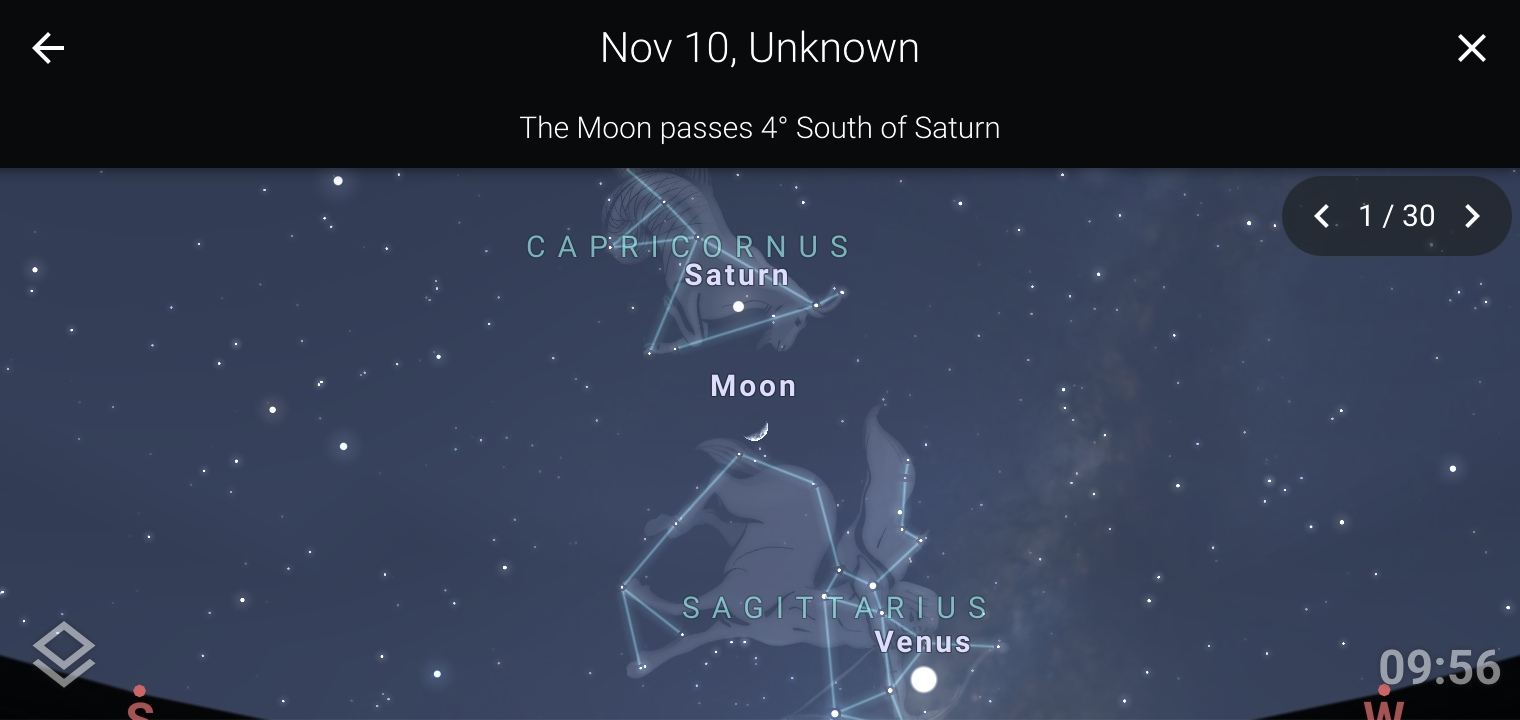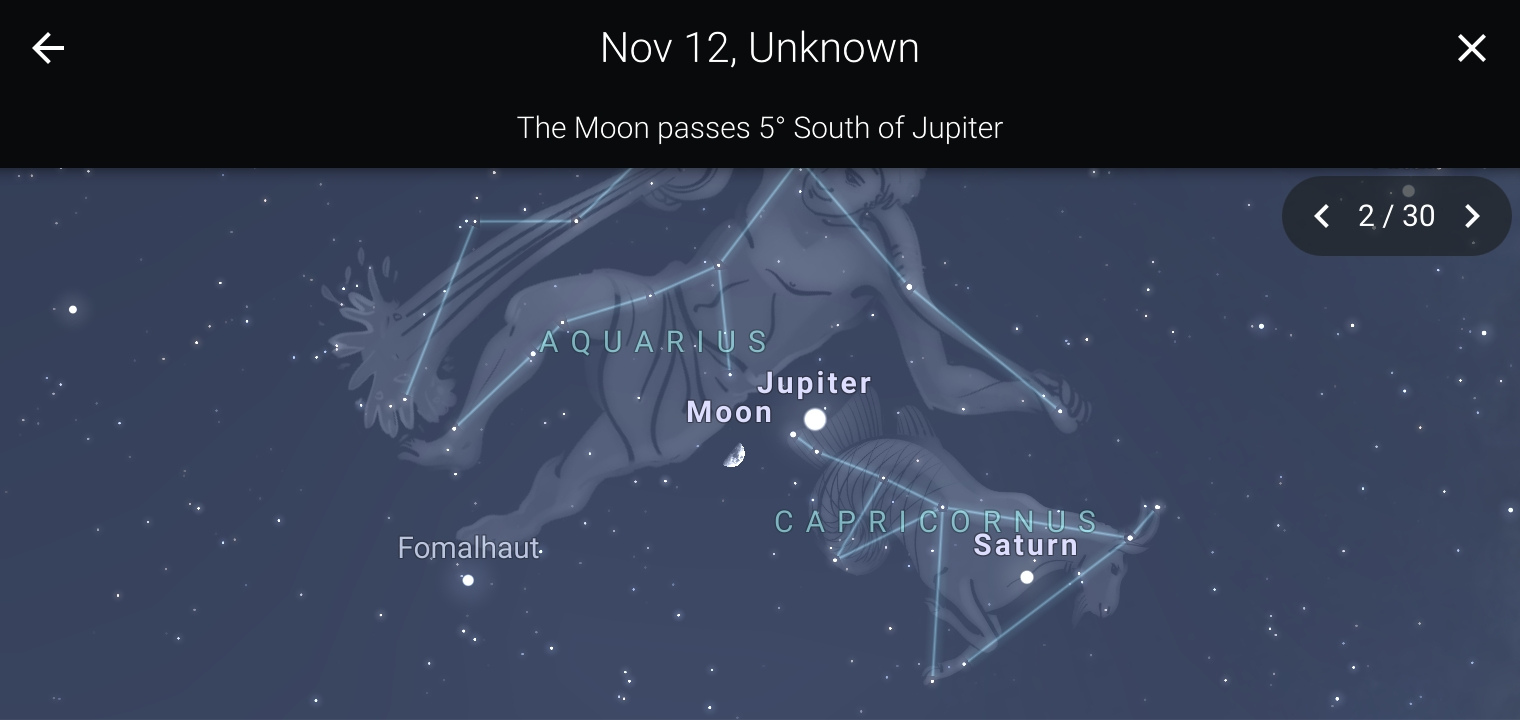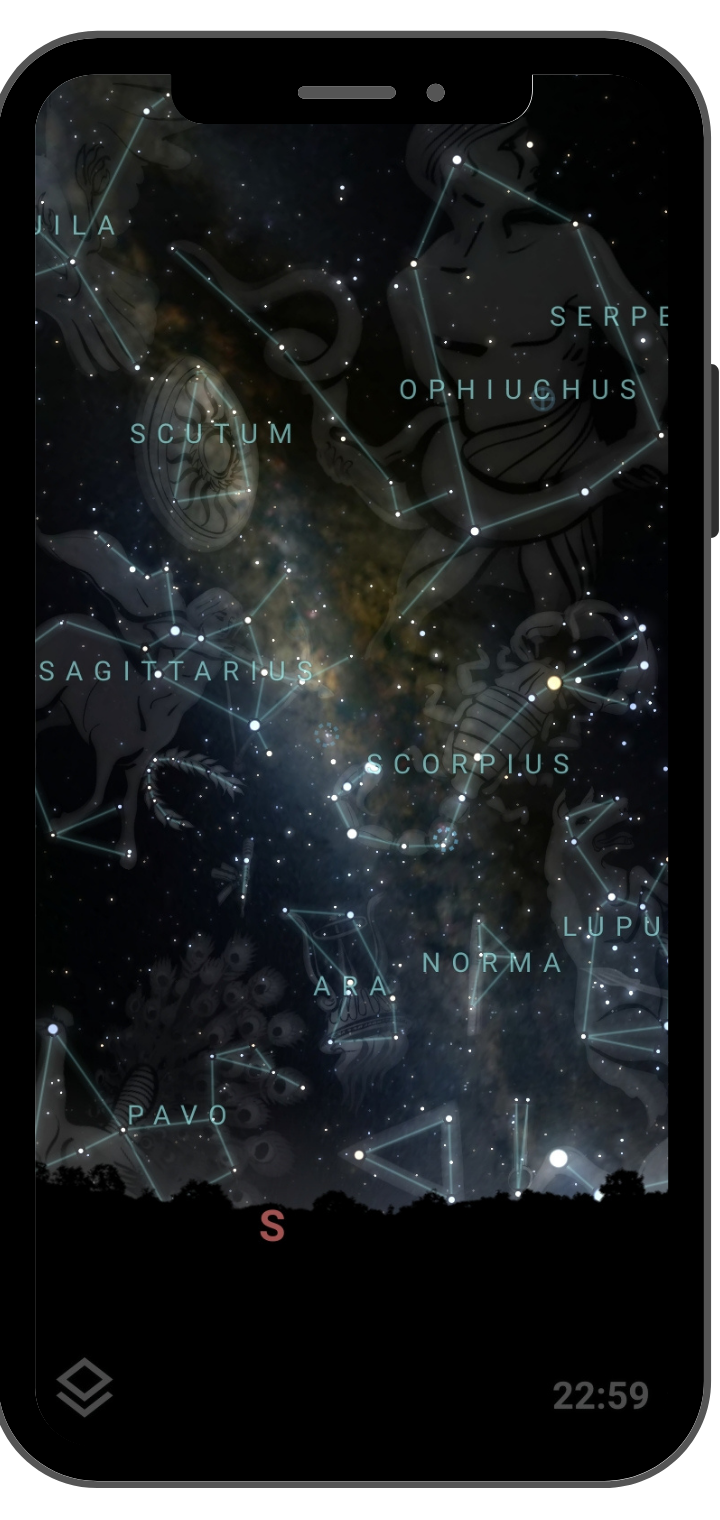Mark your calendars, for two more astronomical events known as conjunctions are expected this week! For tonight, November 10, the Moon and Saturn will be seen together, while on Friday, November 12, the Moon and Jupiter will pass by each other. These are some of the brightest astronomical objects that can be seen with the naked eye, which makes their positions easy to spot in the night sky!
November 10, 2021
This Moon-Saturn conjunction is best observed in the early hours of the evening, and it peaks after 10:00 UTC. During this time, the Moon and Saturn will be descending on the horizon, where Saturn can be seen as close as 4° north of the Moon. To catch sight of this conjunction, look southwest, in the constellation Capricornus; both astronomical bodies can be seen inside Capricornus’ area, where they will stay with the Sea Goat as it goes down in the night sky.

Tonight, the Moon is nearing the end of its Waxing Crescent phase, which is the first phase that it transitions into after a New Moon.
Other objects that can be seen in the night sky at this time are the planets Jupiter, which lies to the northwest of the Moon and Saturn, and Venus, which is flush in the center of the constellation Sagittarius southwest of the conjunction. The
Summer Triangle
, consisting of Deneb, Altair, and Vega, are also visible at the time of the conjunction, appearing overhead on the western sector of the night sky. The stars of this asterism are among the brightest in their constellations, which makes them easy to spot with the naked eye.
November 12, 2021
This Moon-Jupiter conjunction can also be seen early in the evening, peaking in between 10:00 and 11:00 UTC. In this event, Jupiter will be cruising eastwards away from the Moon, the planet approaching Earth’s lone satellite for as close as 1° within each other. This conjunction can be seen in the southwest sector of the sky, with Jupiter edging at the northwestern corner of Capricornus and the Moon positioned at the southern end of Aquarius.

In this event, the Moon has exited the Waxing Crescent phase and is entering the Waxing Gibbous phase, which is the phase that comes after the First Quarter and before the Full Moon. During this phase, more and more sunlight is reflected off the surface of the Moon, which can drown out some of the fainter objects in the night sky.
Like with the conjunction on November 10, the planets Jupiter and Venus are also visible on Friday night, as well as the
Summer Triangle asterism
. Another object that can be seen along with the conjunction is Fomalhaut, the brightest star in the constellation Piscis Austrinus as well as the 18th brightest star in the night sky, which is located just southwest of the Moon.
Stellarium shows you an accurate projection of the night sky on any given date and location and provides insightful information on any astronomical object with a single press. To keep yourself up to date with more astronomical events like the Moon conjunctions, download Stellarium on your mobile devices today!

Available on Google Play and the iOS App Store
App Store®
Google Play and the Google Play logo are trademarks of Google LLC.

